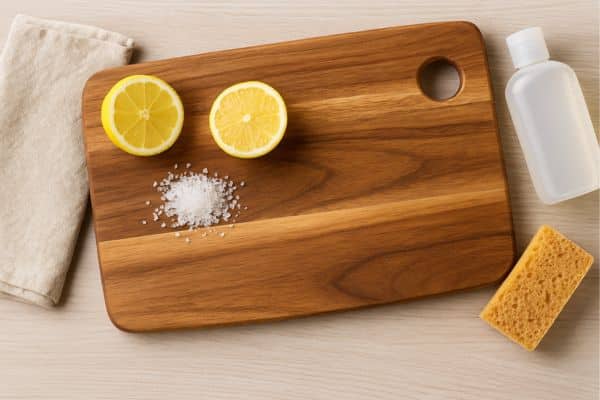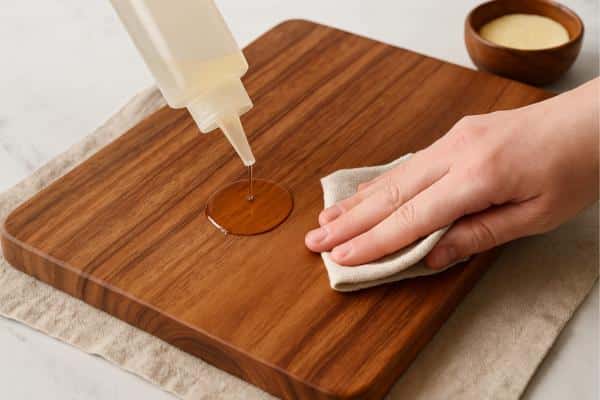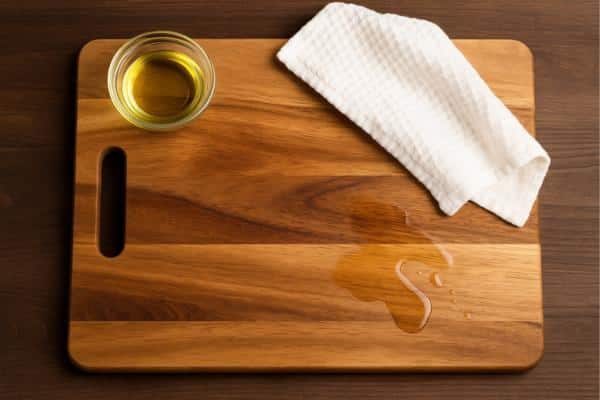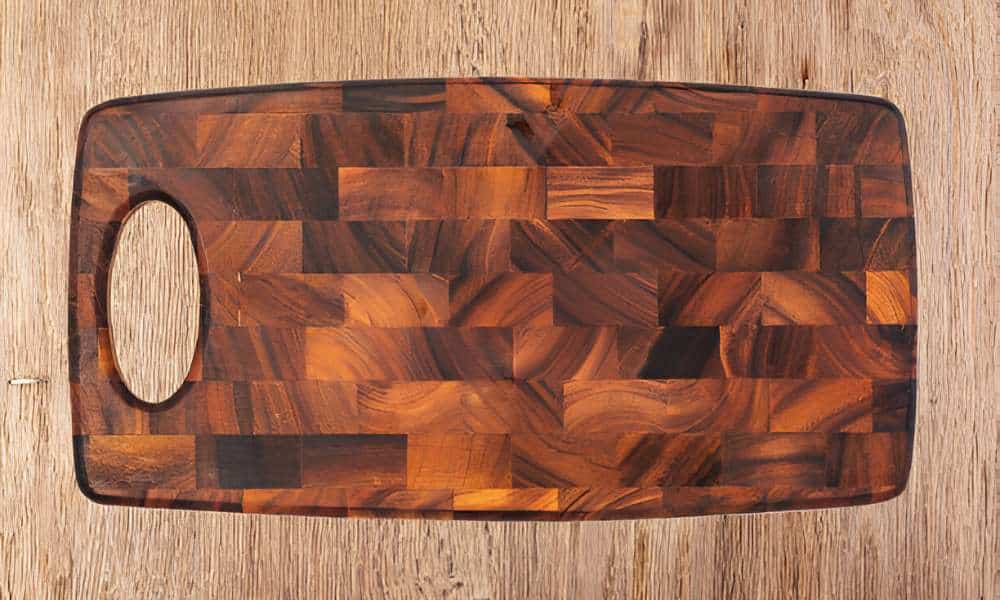I still remember the day I bought my first acacia wood cutting board. It felt like bringing home a piece of art. The wood was warm and rich, with natural patterns that looked like brushstrokes. I almost didn’t want to use it—just stare at it on the kitchen counter. But of course, the kitchen is a working space, not a museum. The first time I chopped garlic on it, I realised something: this board wasn’t just pretty—it was tough. Unlike plastic boards that stain or bamboo ones that dry out too fast, my acacia board handled everything with quiet strength. Still, it didn’t take long to see that beauty like this needs care. That’s when I started learning how to clean acacia wood cutting board the right way.
Why Acacia Wood Needs Special Attention
Acacia wood is tough, but it still needs care. It holds up well under pressure. It resists moisture better than many other woods. That’s why many cooks trust it.
This wood is rich in natural oils. These oils protect the surface. They help stop bacteria and keep the wood from drying out. But even strong wood breaks down without care.
It’s not like bamboo, which cracks too fast. Not like plastic, which stains and dulls knives. It’s not as soft as maple, either. Acacia is a great middle ground.
Still, it has rules. Never soak it in water. Don’t use harsh soap. Never toss it in the dishwasher. One long soak can ruin the whole board.
Step-by-Step Guide on How to Clean
Cleaning your board the right way keeps it safe and looking great. Here’s how I do it after years of daily use.
01. Wipe Right After Use

Grab a clean cloth or paper towel. Wipe off crumbs, moisture, or food bits. Do this before anything sticks.
02. Wash with Mild Soap and Warm Water
Use a soft sponge with gentle soap. Scrub lightly along the grain. Rinse fast with warm water—never hot.
03. Never Soak or Put in Dishwasher
Don’t let your board sit in water. Ever. No matter how dirty it looks. Dishwashers? Off-limits. Soaking warps the board and washes out the good oils.
04. Dry It Right Away
Use a towel to dry every side. Then stand it up or lean it on its edge. Let it breathe. Fast drying stops cracks, mould, and stains.
05. Deep Clean with Lemon and Salt

Sprinkle coarse salt on the surface. Cut a lemon in half and scrub it in. Let it sit for five minutes, then wipe clean. This clears smells, lifts stains, and keeps your board fresh.
06. Oil Often (More on That Soon)
Once your board is dry, give it some love. Rub in food-safe oil using a clean cloth. Let it soak overnight.
How to Season a Cutting Board (Like a Pro)

Seasoning isn’t just for cast iron. It matters for wood, too. It’s how you protect your board and make it last. Think of it as feeding the wood so it stays healthy.
What Seasoning Means
Seasoning your board means rubbing it with oil. The oil soaks in deep, filling tiny cracks and locking in moisture. This helps prevent stains, warping, and splits, whether you’re slicing fruit or using the best cutting board for brisket.
Best Oils for the Job
Use food-safe mineral oil. It’s cheap, safe, and easy to find. For extra shine, mix in some beeswax. Don’t use olive or vegetable oils. They can go bad and smell weird.
How Often and How Much
Oil your board every two to three weeks. If it looks dry or rough, it’s time. Just one or two teaspoons is enough. Rub it in and let it soak overnight.
Easy Steps to Oil Your Board
- Make sure the board is clean and dry.
- Pour a little oil in the centre.
- Rub it in with a cloth or your hands. Cover all sides.
- Let it sit for a few hours or overnight.
- Wipe off any extra oil with a clean towel.
Long-Term Care Tips
A good cutting board is like a kitchen friend. The more care you give it, the better it gets. Long-term habits make all the difference.
Store It Upright
Always store your board standing up. Let it breathe. Flat boards trap moisture and bend over time. Standing up helps prevent mould and keeps the shape even.
Keep It Away from Heat or Cold
Don’t place it near stoves or windows. Too much heat dries the wood. Cold air can crack it. A stable room temperature is best for cutting care.
Use Both Sides
Flip the board often. Using both sides helps it wear evenly. It also gives one side a break. This simple trick helps stop warping before it starts.
Clean It Gently and Often
Don’t wait until it looks dirty. A soft, clean after each use keeps it safe and fresh. Never scrub too hard. Gentle washing is key to smart maintenance.
Common Mistakes (I’ve Made Them Too!)

Even with the best tools, it’s easy to slip up. I’ve made my share of mistakes. The good news? You can avoid them.
Using Olive or Vegetable Oil
I once used olive oil to season my board. Big mistake. It smelled fine at first, but after a few days, it turned sticky. Then it started to smell bad. Only use food-grade mineral oil. Others go rancid.
Leaving It Wet Overnight
There was a night I left my board on the counter, wet and forgotten. By morning, it had warped at one edge. Lesson learned. Always dry it right away. Water is wood’s worst enemy.
Not Cleaning After Raw Meat
Early on, I prepped chicken and didn’t clean the board well after. That’s risky. Even though acacia fights bacteria, you still need to clean properly. Always scrub with soap and dry after handling raw meat.
Final Thoughts
Your cutting board tells a story. Each mark, each stain—it’s all part of the journey. The more you use it, the more it becomes yours.
A well-loved board doesn’t need to look perfect. It needs to feel right. Smooth, solid, ready. That comes from small, daily habits. That’s wood cutting board care at its best.
The board grows with you. It shows the meals you’ve made. It holds the rhythm of your kitchen. And like all tools that matter, it gets better over time.


